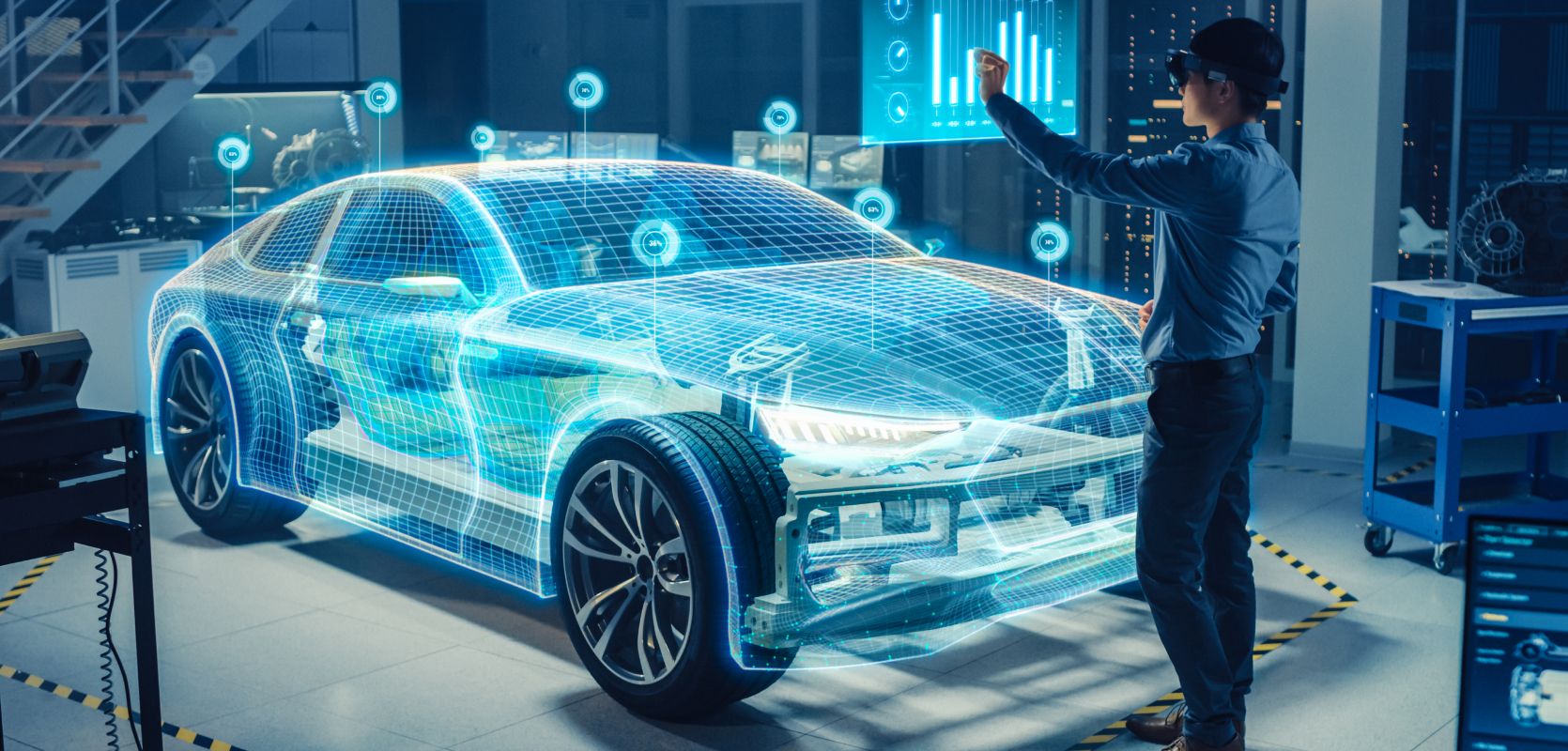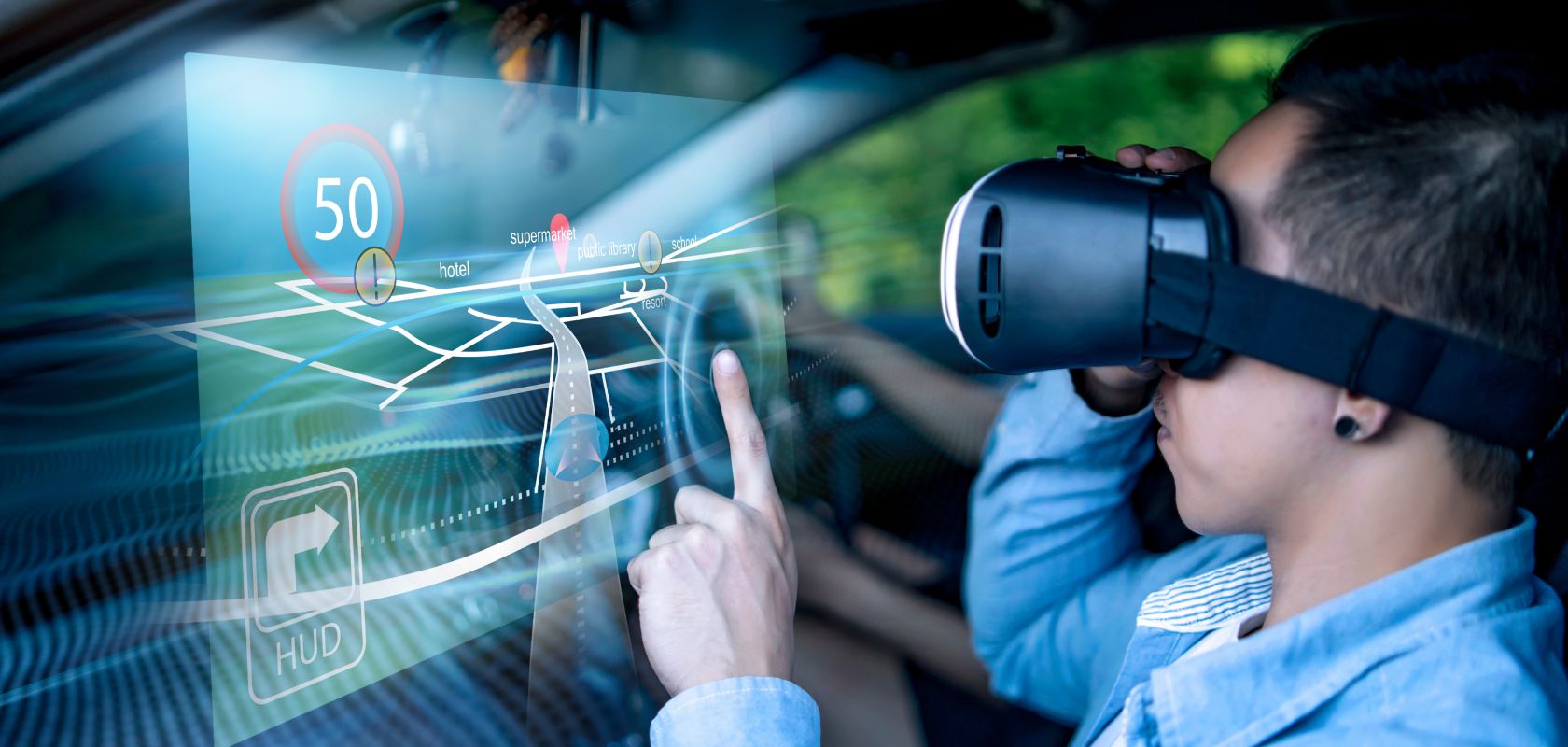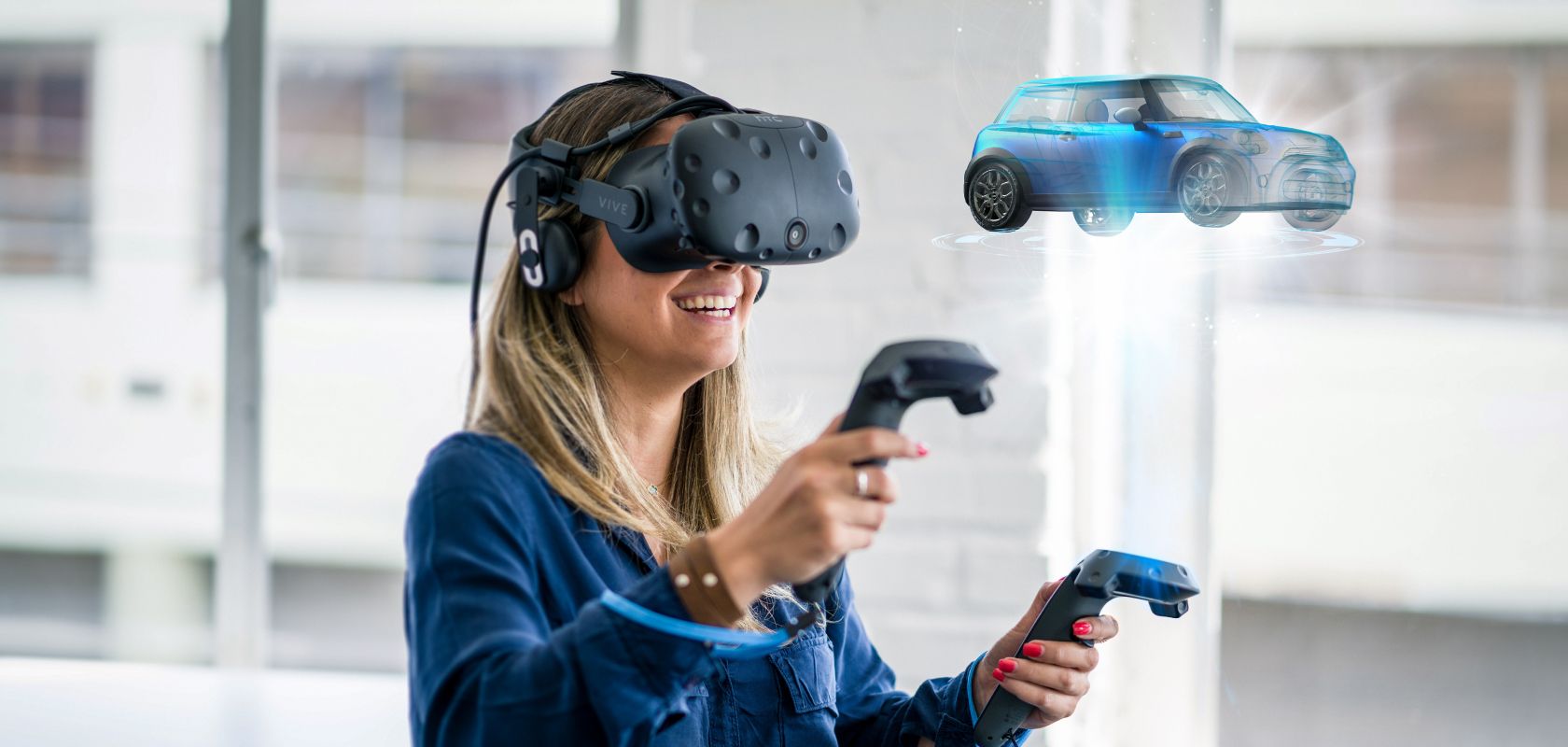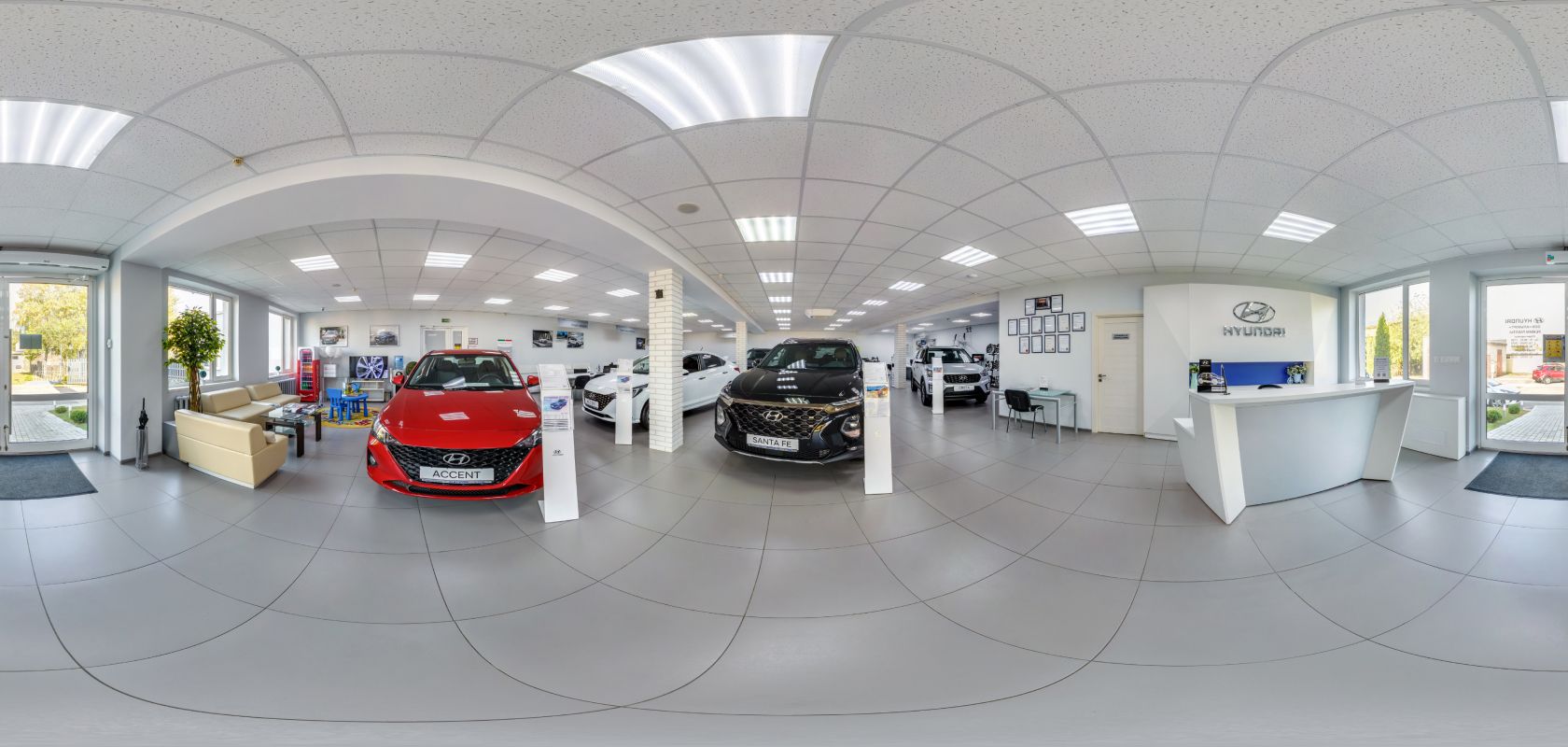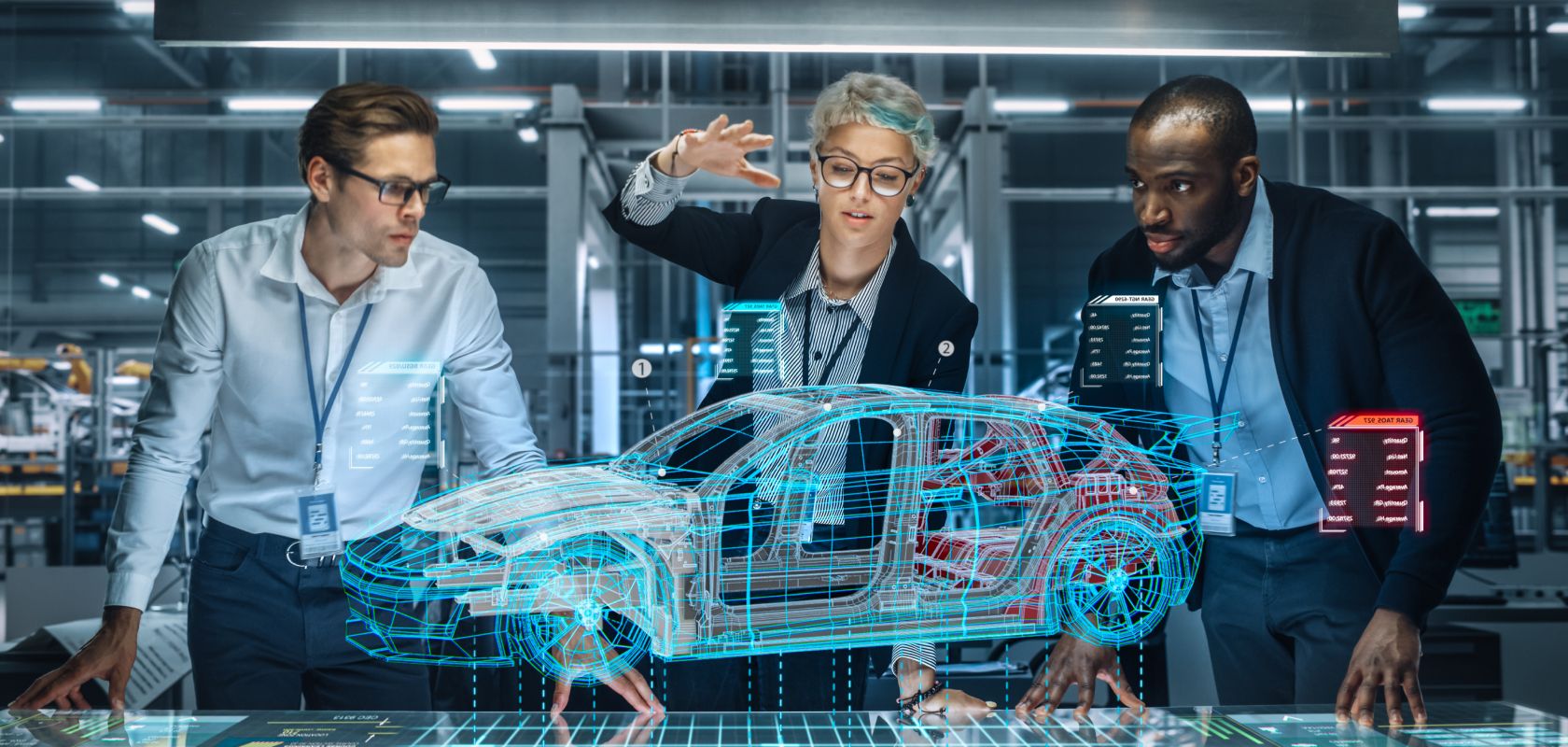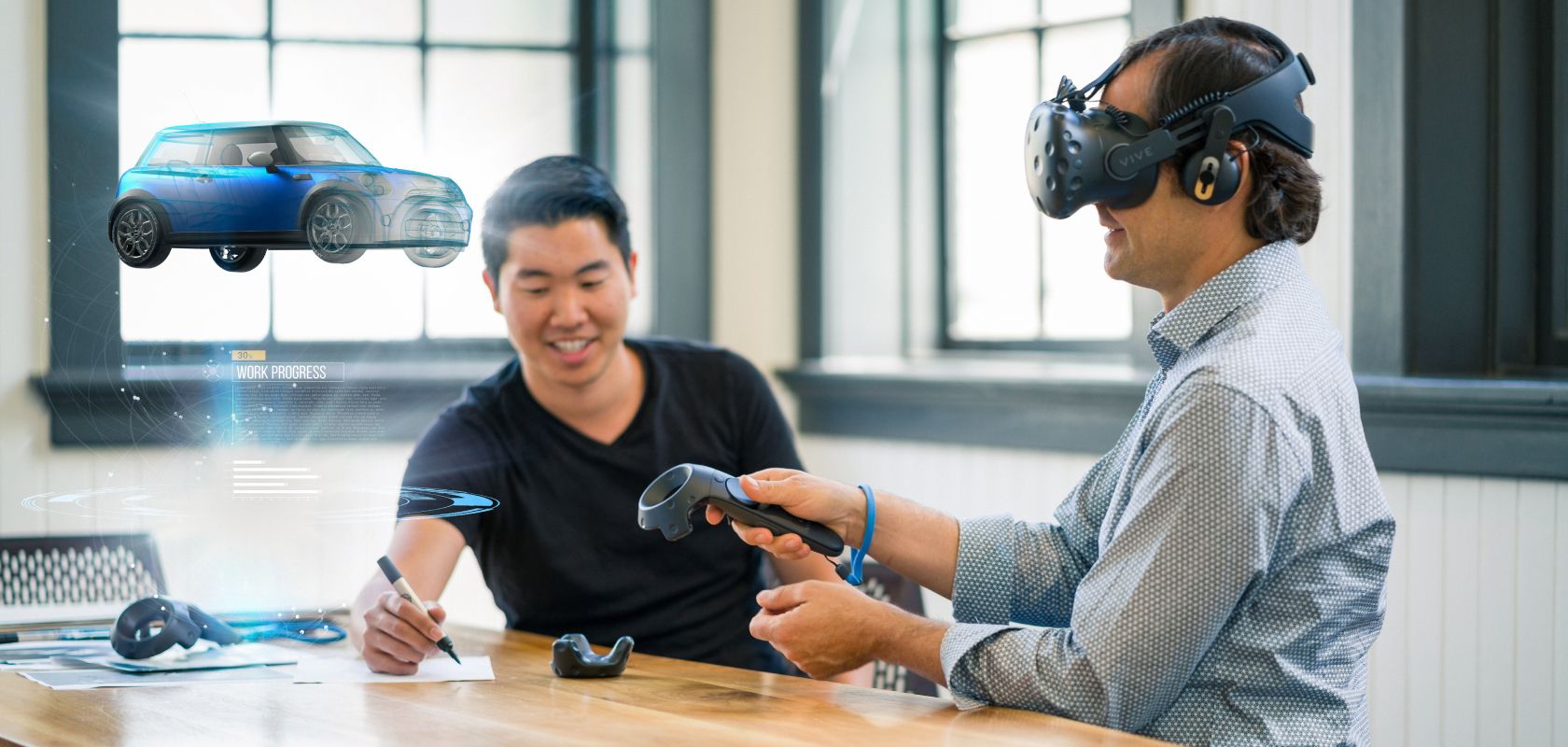AUTOMOTIVE
Revolutionizing Automotive with AI and Immersive Reality
Immersive technologies like AR, VR, and AI are reshaping the automotive industry—from design and prototyping to sales, training, and customer engagement. With AI-powered virtual showrooms, interactive product demos, and immersive training environments, brands can accelerate development, reduce costs, and deliver memorable customer experiences. At Vection Technologies, we help automotive companies innovate faster and connect smarter—merging real-time 3D with intelligent automation for a new era of mobility.
Immersive Technologies Explained
Immersive technologies like AR and VR, enhanced by AI, aim to recreate reality through interactive digital environments that feel natural and intuitive. At Vection Technologies, we combine immersive experiences with AI-driven intelligence to transform how people learn, work, and interact—merging the virtual and real for smarter, more human-centered solutions.
Current Applications and Benefits of Immersive Technologies in the Automotive Industry
AR and VR have been adopted to various degrees by all major automakers, and the metaverse is being explored by a number of companies. These immersive technologies are likely to have a major impact on the automotive industry in the years to come.
VR Showrooms
The car industry is under pressure as consumers shift their spending to experiences over things. In response, automakers are turning to VR showrooms to give potential customers a taste of what it's like to own one of their vehicles. Some companies are even experimenting with AR and the metaverse as a way to create even more immersive experiences. By using these technologies, automakers can give customers a truly unique look at what it would be like to own their car. VR showrooms are still in their early stages, but they have the potential to revolutionize the automotive industry. As more companies adopt this technology, we'll only see more innovation and creativity in the way that cars are sold.
Design, prototyping, development, and manufacturing
VR is used in engineering with CAD software to design cars virtually before they are built. This allows engineers to catch problems early on and avoid costly mistakes. AR is used in the manufacturing process to overlay instructions onto real-world objects, making it easier for workers to see what they need to do. Simulations created in VR can be used to test drive cars before they exist, which is helpful for design and marketing.
Digital-based training
Digital-based training is an essential part of the automotive industry. It allows employees to be instructed and monitored in a controlled environment, while also providing a realistic experience that can prepare them for real-world scenarios. Both AR and VR have been used extensively in the automotive industry for training purposes, from vehicle assembly to repairs.
Takeaway
When it comes to the automotive industry, there is no doubt that augmented reality (AR), virtual reality (VR), and the metaverse will play a major role in its future. While some may think that these technologies are still in their infancy, the truth is that they have already made a significant impact on the way that automakers design, build, and sell vehicles.
As far as AR is concerned, one of the most popular applications in the automotive industry is vehicle customization. Using AR, customers can see how different paint colors or wheel designs would look on their desired vehicle without having to actually make any changes. This allows them to make more informed decisions about their purchase, ultimately leading to better customer experiences. VR, on the other hand, is being used by automakers to provide customers with an immersive experience that goes beyond simply looking at cars.
AR, VR, and the metaverse are already having a major impact on the automotive industry. And as these technologies continue to evolve, they are only going to become more important in the years to come.
